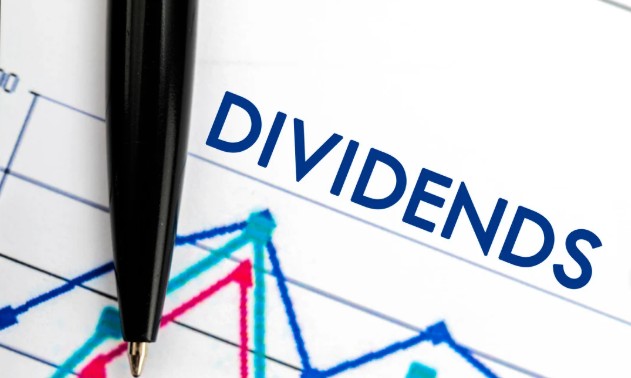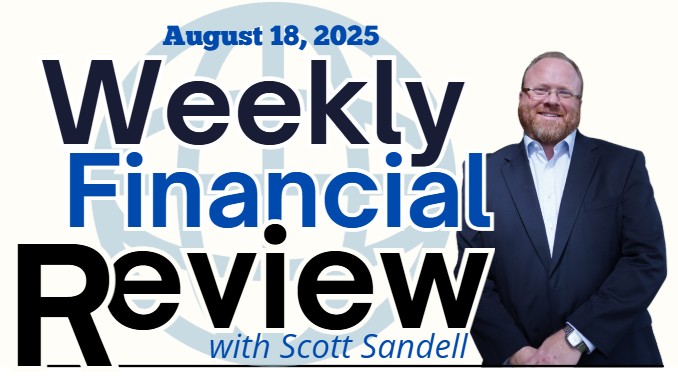401(k)s Could Soon Include Private Equity and Crypto

The Department of Labor is considering new rules to allow 401(k) plans to invest in private equity and cryptocurrency.
Source:
U.S. Department of Labor.
Why it matters:
This represents a major shift in how retirement accounts can be allocated. Private equity offers the potential for high returns, but often requires locking up money for years and comes with less transparency than publicly traded investments. Crypto, while exciting, remains extremely volatile and could see large price swings in short periods. For someone near or in retirement, these risks can be magnified — because there’s less time to recover from market downturns. The question isn’t simply “Can I get access to these investments?” but “Should I?” For most high-net-worth retirees, these asset classes might be appropriate only as a small, satellite position within a well-diversified plan — after ensuring that core income and capital preservation needs are fully met.
Home Prices Rise Despite Higher Rates

Median home prices rose 5% year-over-year, even as mortgage rates stayed above 6.5%.
Source:
National Association of Realtors.
Why it matters:
Rising prices in the face of higher borrowing costs show that housing markets are driven by more than just interest rates — limited inventory and strong demand can keep prices elevated. For retirees, this has two implications: first, if you’re considering downsizing or relocating, waiting for a “big drop” in home prices might not be realistic. Second, selling in a strong market could free up equity for investment or income needs, but you’ll want to plan where that equity will go next. Housing decisions in retirement aren’t just about lifestyle — they can influence your tax situation, cash flow, and long-term estate planning.
Baby Boomer Wealth Transfer Tops $84 Trillion

Over the next two decades, Baby Boomers are expected to pass down more than $84 trillion in assets.
Source:
Cerulli Associates.
Why it matters:
This will be the largest transfer of wealth in U.S. history. For retirees, the concern isn’t just passing money on — it’s doing so efficiently, with minimal tax erosion and in a way that preserves family harmony. Without proper planning, inheritances can lead to disputes, unnecessary taxes, and even financial ruin for heirs who aren’t prepared to manage large sums. Advanced estate strategies — such as trusts, charitable giving structures, and tax-smart gifting — can ensure your wealth does more than simply change hands; it can reflect your values and secure your family’s financial footing for generations.
Social Security Cost-of-Living Adjustment (COLA) for 2025 Estimated at 2.6%

Next year’s Social Security benefits are expected to rise by about 2.6%.
Source:
The Senior Citizens League.
Why it matters:
While a COLA is designed to offset inflation, it’s based on general consumer prices — not the specific costs retirees face, such as healthcare and housing, which often rise faster. Over time, this creates a gap between Social Security income and actual living expenses. For those in or near retirement, relying solely on these adjustments could result in a slow but steady decline in purchasing power. A sound plan layers Social Security with other inflation-protected income streams to ensure your lifestyle isn’t gradually diminished.
U.S. National Debt Hits $35 Trillion

America’s national debt has surpassed $35 trillion for the first time.
Source:
U.S. Treasury Department.
Why it matters:
While it’s impossible to predict exactly how or when the debt will impact markets, history suggests that high debt levels can lead to higher taxes, inflation, or changes to entitlement programs. For high-net-worth retirees, this creates a strong case for tax diversification — having assets in different “tax buckets” (taxable, tax-deferred, and tax-free) so you can choose the most efficient withdrawal strategy no matter what tax policy looks like in the future. Ignoring this risk could mean paying far more in taxes over your lifetime than necessary.
Average Retirement Age Rises to 64

The average American retirement age has climbed to 64 — up from 62 two decades ago.
Source: Gallup Poll, 2024.
Why it matters: Working longer can be a choice, but for many, it’s a necessity — either due to insufficient savings, healthcare costs, or supporting adult children. For high-net-worth individuals, this trend still matters because it underscores the importance of maintaining flexibility. A robust plan means you can retire when you want to, not because your finances force you to keep working. Even if you enjoy your career, unexpected health issues or market downturns can change your plans quickly, and having income streams ready gives you control over the transition.
Inflation-Protected Treasuries See Strong Demand

Investor demand for Treasury Inflation-Protected Securities (TIPS) is at a 15-year high.
Source:
U.S. Treasury Department.
Why it matters:
TIPS adjust their principal value with inflation, making them a safeguard for purchasing power. For retirees, especially those with a long time horizon, inflation is one of the greatest threats to income sustainability. While TIPS can be a valuable tool, they aren’t a complete solution — they work best when paired with other income and growth assets in a diversified portfolio. The goal isn’t just to keep up with inflation but to stay ahead of it, allowing your income to grow faster than your expenses over decades.
Healthcare Costs for Retirees Keep Rising

The average 65-year-old couple retiring this year will need $315,000 to cover lifetime healthcare costs.
Source:
Fidelity Investments.
Why it matters:
Healthcare is one of the largest — and most underestimated — expenses in retirement. This number doesn’t even include long-term care, which can add hundreds of thousands more. Without a plan, these costs can erode your portfolio and limit your flexibility. Strategies like Health Savings Accounts, Medicare optimization, and supplemental insurance can help control these expenses. Planning ahead ensures that rising healthcare costs won’t derail your other financial goals.
Record Number of Americans Have $1 Million in Their 401(k)

Record Number of Americans Have $1 Million in Their 401(k)
Fidelity reports that more Americans than ever have reached $1 million in their retirement accounts.
Source:
Fidelity Investments, Q2 2024 Retirement Report.
Why it matters:
While $1 million feels like a big number, it doesn’t guarantee financial independence — especially over a 25- to 30-year retirement. The real challenge is converting that balance into reliable income while protecting it from inflation, taxes, and market risk. Without a structured withdrawal plan, it’s easy to either spend too quickly and run out of money or spend too conservatively and miss opportunities for enjoyment in retirement.
Global Dividend Payouts Hit Record $1.66 Trillion

Worldwide, companies paid a record $1.66 trillion in dividends last year.
Source:
Janus Henderson Global Dividend Index.
Why it matters:
Dividend-paying investments can be an excellent income source for retirees, providing cash flow without selling principal. However, chasing the highest yields can be risky if those dividends aren’t sustainable. A dividend strategy should focus on quality companies with stable or growing payouts — combined with other income sources — to create a reliable, inflation-resistant retirement paycheck.
✅ Final Thoughts:
The world retirees face today is complex — with shifting market conditions, policy changes, and demographic realities all influencing how long wealth lasts. These stories reveal the need for proactive, adaptive strategies that balance opportunity with risk. Whether it’s navigating new investment options like private equity and crypto, anticipating healthcare inflation, or preparing for the largest wealth transfer in history, the underlying theme is control. Control over your assets, your income streams, and your tax exposure can mean the difference between simply retiring and retiring with confidence.

